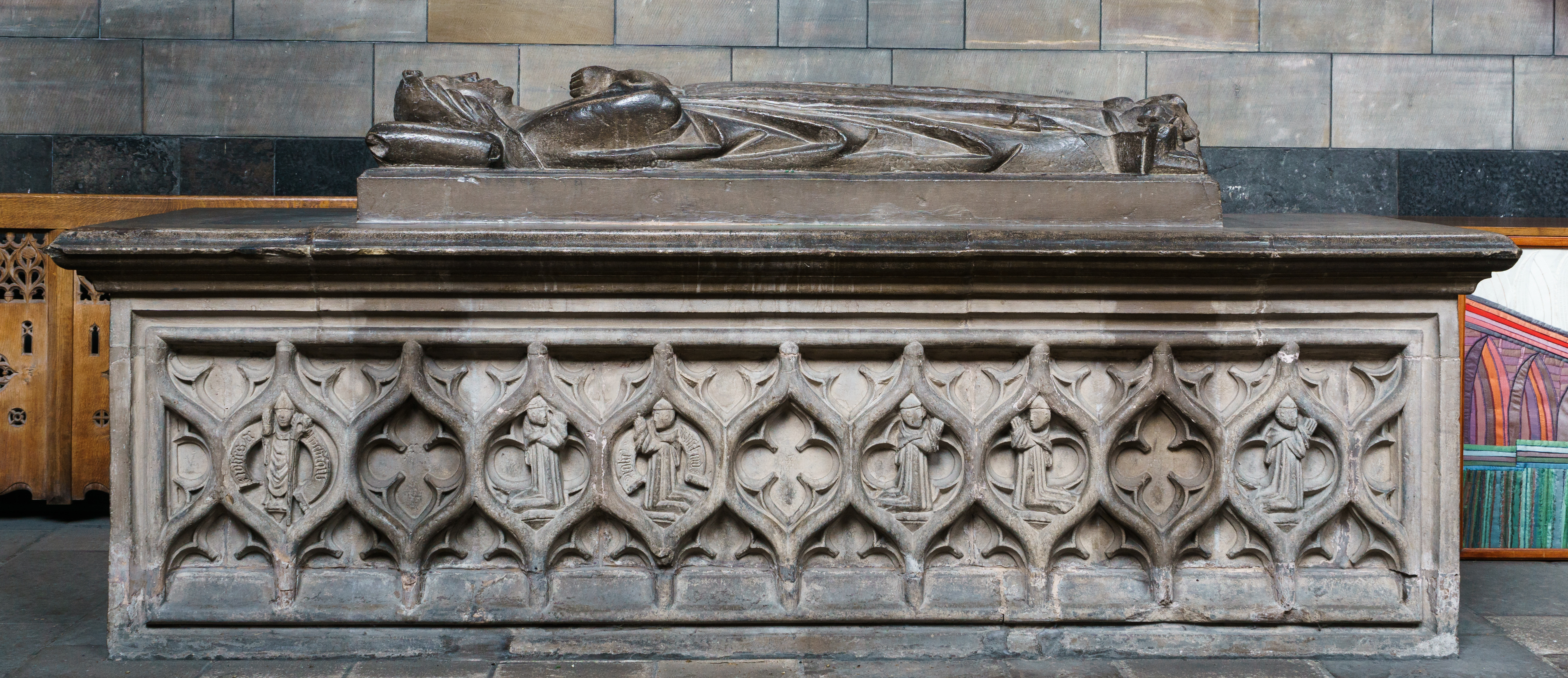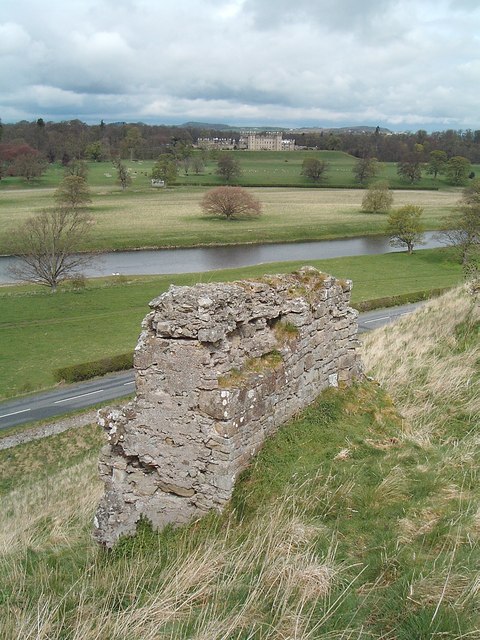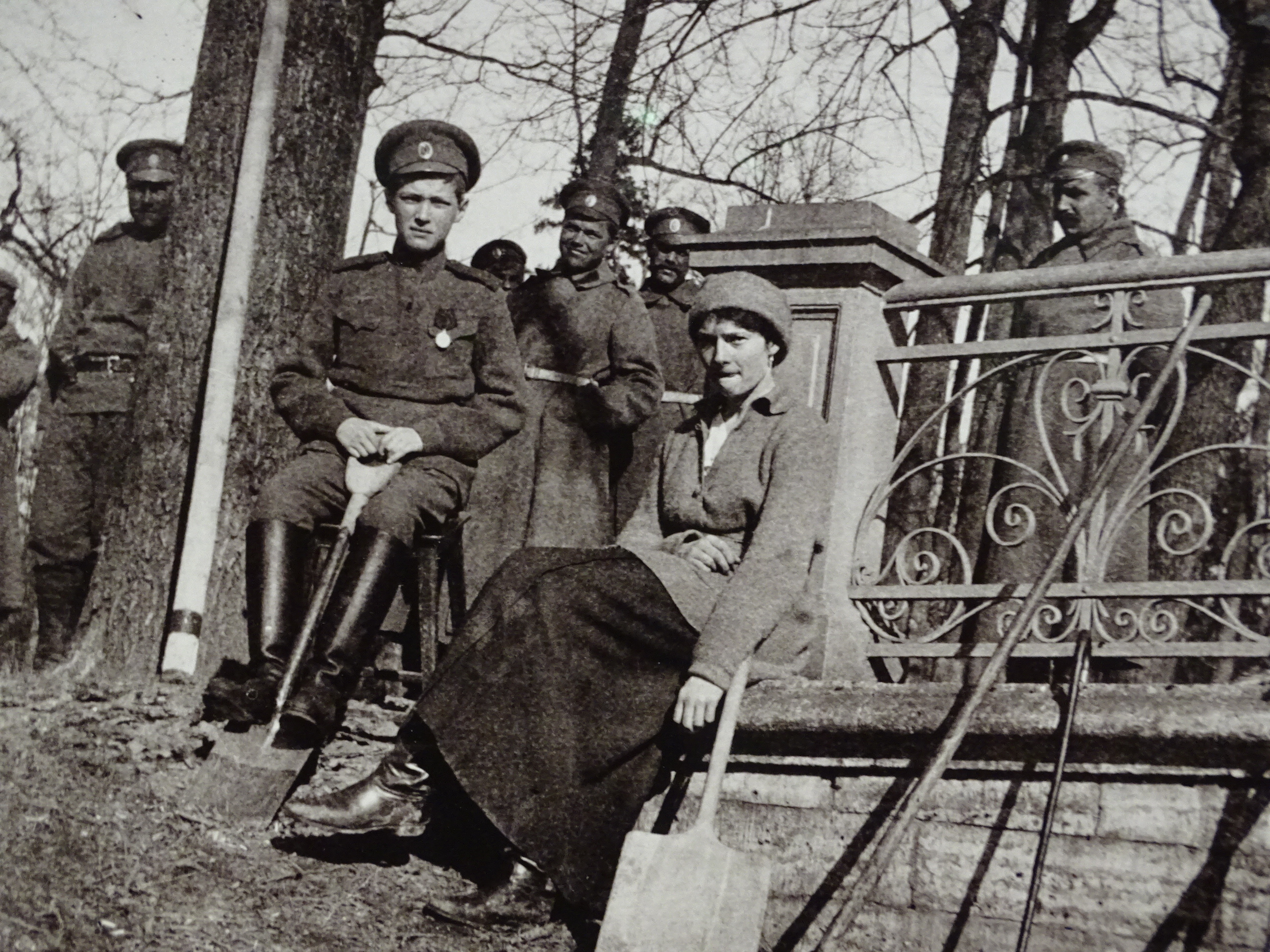|
Marjorie Bruce
Marjorie Bruce or Marjorie de Brus (c. 12961316 or 1317) was the eldest daughter of Robert the Bruce, King of Scots, and the only child born of his first marriage with Isabella of Mar. Marjorie's marriage to Walter, High Steward of Scotland, gave rise to the House of Stewart. Her son was the first Stewart monarch, King Robert II of Scotland. Early life Her mother, Isabella, was a noblewoman from the Clan Mar. Marjorie was named after her father's mother, Marjorie, Countess of Carrick. Soon after giving birth to Marjorie, at the age of 19, Isabella died."Elizabeth de Burgh and Marjorie Bruce". Foghlam Alba Marjorie's father was at that time the |
Isabella Of Mar
Isabella of Mar (fl. c. 1277 – 12 December 1296) was the first wife of Robert Bruce VII, Earl of Carrick. Isabella died before her husband was crowned (as Robert I) King of Scotland. She and her husband were the grandparents of Robert II, King of Scotland, founder of the Royal House of Stuart. Isabella was the daughter of Domhnall I, Earl of Mar (died 1297 - 1302) and Elena, daughter of Llywelyn the Great (died after 1295). Isabella's father was evidently an adherent of Robert Bruce V, Lord of Annandale (died 1295), a man who staked a claim to the Scottish throne. The close relationship between Domhnall's family and the Bruces is evidenced by two marriages; the first between Isabella and Robert, and the second between Domhnall's son and comital successor, Gartnait (died c.1302), and a sister of Robert Bruce VII. The marriage of Robert Bruce VII and Isabella probably took place in the 1290s. The union produced a single child, a daughter named Marjorie (died 1316), wh ... [...More Info...] [...Related Items...] OR: [Wikipedia] [Google] [Baidu] |
Paisley Abbey
Paisley Abbey is a parish church of the Church of Scotland on the east bank of the White Cart Water in the centre of the town of Paisley, Renfrewshire, about west of Glasgow, in Scotland. Its origins date from the 12th century, based on a former Cluniac monastery. Following the Reformation in the 16th century, it became a Church of Scotland parish kirk. History It is believed that Saint Mirin (or Saint Mirren) founded a community on this site in 7th century. Some time after his death a shrine to the Saint was established, becoming a popular site of pilgrimage and veneration. The name Paisley may derive from the Brythonic (Cumbric) ''Passeleg,'' 'basilica' (derived from the Greek), i.e. 'major church', recalling an early, though undocumented, ecclesiastical importance. In 1163, Walter fitz Alan, the first High Steward of Scotland issued a charter for a priory to be set up on land owned by him in Paisley. It was dedicated to SS. Mary, James, Mirin and Milburga. Around 13 mo ... [...More Info...] [...Related Items...] OR: [Wikipedia] [Google] [Baidu] |
Isabella MacDuff, Countess Of Buchan
Isabella MacDuff, Countess of Buchan (probably died c. 1314), was a significant figure in the Wars of Scottish Independence. She was the daughter of Donnchadh III, Earl of Fife, and Johanna de Clare, daughter of The 6th Earl of Hertford. She was married to John Comyn, 3rd Earl of Buchan, and thus was the Countess of Buchan. After Robert the Bruce killed John III Comyn, Lord of Badenoch, at Greyfriars Kirk in Dumfries, the Earl of Buchan joined the English side in the Scottish Wars of Independence. Isabella took the contrary view. According to tradition, the ceremony of crowning the monarch was performed by a representative of Clan MacDuff, but Isabella, Lady Buchan, arrived in Scone the day after the coronation of Robert the Bruce in March 1306. However, the Bruce agreed to be crowned for a second time the day after, as otherwise some would see the ceremony as irregular, not being performed by a MacDuff. Bruce was defeated at the Battle of Methven in June 1306, so he s ... [...More Info...] [...Related Items...] OR: [Wikipedia] [Google] [Baidu] |
Roxburgh Castle
Roxburgh Castle is a ruined royal castle that overlooks the junction of the rivers Tweed and Teviot, in the Borders region of Scotland. The town and castle developed into the royal burgh of Roxburgh, which the Scots destroyed along with the castle after capturing it in 1460. Today the ruins stand in the grounds of Floors Castle, the seat of the Duke of Roxburghe, across the river from Kelso. History Tradition states that King David I founded the castle; it is first recorded in c.1128 during his reign. In 1174, it was surrendered to England after the capture of William I at Alnwick, and was often in English hands thereafter. The Scots made many attempts to regain the fortress. King Edward I of England imprisoned Mary Bruce in a cage hung outside the castle from 1306 to 1310. On 19 February 1314, it was retaken by Sir James Douglas (the "Black Douglas"), in a night attack. His men clothed in black cloaks were apparently mistaken for cattle. They then used rope and board ... [...More Info...] [...Related Items...] OR: [Wikipedia] [Google] [Baidu] |
Mary Bruce
Mary may refer to: People * Mary (name), a feminine given name (includes a list of people with the name) Religious contexts * New Testament people named Mary, overview article linking to many of those below * Mary, mother of Jesus, also called the Blessed Virgin Mary * Mary Magdalene, devoted follower of Jesus * Mary of Bethany, follower of Jesus, considered by Western medieval tradition to be the same person as Mary Magdalene * Mary, mother of James * Mary of Clopas, follower of Jesus * Mary, mother of John Mark * Mary of Egypt, patron saint of penitents * Mary of Rome, a New Testament woman * Mary, mother of Zechariah and sister of Moses and Aaron; mostly known by the Hebrew name: Miriam * Mary the Jewess one of the reputed founders of alchemy, referred to by Zosimus. * Mary 2.0, Roman Catholic women's movement * Maryam (surah) "Mary", 19th surah (chapter) of the Qur'an Royalty * Mary, Countess of Blois (1200–1241), daughter of Walter of Avesnes and Margaret of Bloi ... [...More Info...] [...Related Items...] OR: [Wikipedia] [Google] [Baidu] |
Richard Óg De Burgh, 2nd Earl Of Ulster
Richard Óg de Burgh, 2nd Earl of Ulster and 3rd Baron of Connaught (; ; 1259 – 29 July 1326), called The Red Earl ( Latinized to de Burgo), was one of the most powerful Irish nobles of the late 13th and early 14th centuries and father of Elizabeth, wife of King Robert the Bruce of Scotland. Early life Richard's father was Walter de Burgh, 1st Earl of Ulster (of the second creation) and Lord of Connacht, who was the second son of Richard Mór de Burgh, 1st Lord of Connaught and Egidia de Lacy. Richard's mother was Aveline FitzJohn, daughter of Sir John FitzGeoffrey. "Richard Óg", means "Richard the Young", which may be a reference to his youth when he became earl in 1271, or to differentiate him from his grandfather, Richard Mór. Earl of Ulster Richard Óg was the most powerful of the de Burgh Earls of Ulster, succeeding his father in Ulster and Connacht upon reaching his majority in 1280. He was a friend of King Edward I of England, who summoned him repeatedly ... [...More Info...] [...Related Items...] OR: [Wikipedia] [Google] [Baidu] |
Yorkshire
Yorkshire ( ; abbreviated Yorks), formally known as the County of York, is a historic county in northern England and by far the largest in the United Kingdom. Because of its large area in comparison with other English counties, functions have been undertaken over time by its subdivisions, which have also been subject to periodic reform. Throughout these changes, Yorkshire has continued to be recognised as a geographic territory and cultural region. The name is familiar and well understood across the United Kingdom and is in common use in the media and the military, and also features in the titles of current areas of civil administration such as North Yorkshire, South Yorkshire, West Yorkshire and the East Riding of Yorkshire. Within the borders of the historic county of Yorkshire are large stretches of countryside, including the Yorkshire Dales, North York Moors and Peak District national parks. Yorkshire has been nicknamed "God's Own Country" or "God's Own County" by its i ... [...More Info...] [...Related Items...] OR: [Wikipedia] [Google] [Baidu] |
Manor House
A manor house was historically the main residence of the lord of the manor. The house formed the administrative centre of a manor in the European feudal system; within its great hall were held the lord's manorial courts, communal meals with manorial tenants and great banquets. The term is today loosely applied to various country houses, frequently dating from the Late Middle Ages, which formerly housed the landed gentry. Manor houses were sometimes fortified, albeit not as fortified as castles, and were intended more for show than for defencibility. They existed in most European countries where feudalism was present. Function The lord of the manor may have held several properties within a county or, for example in the case of a feudal baron, spread across a kingdom, which he occupied only on occasional visits. Even so, the business of the manor was directed and controlled by regular manorial courts, which appointed manorial officials such as the bailiff, granted ... [...More Info...] [...Related Items...] OR: [Wikipedia] [Google] [Baidu] |
House Arrest
In justice and law, house arrest (also called home confinement, home detention, or, in modern times, electronic monitoring) is a measure by which a person is confined by the authorities to their residence. Travel is usually restricted, if allowed at all. House arrest is an alternative to being in a prison while awaiting trial or after sentencing. While house arrest can be applied to criminal cases when prison does not seem an appropriate measure, the term is often applied to the use of house confinement as a measure of repression by authoritarian governments against political dissidents. In these cases, the person under house arrest often does not have access to any means of communication with people outside of the home; if electronic communication is allowed, conversations may be monitored. History Judges have imposed sentences of home confinement, as an alternative to prison, as far back as the 17th century. Galileo was confined to his home following his infamous tria ... [...More Info...] [...Related Items...] OR: [Wikipedia] [Google] [Baidu] |
Christina Bruce
Christian or Christina Bruce (c. 1278 – 1356/1357), also known as Christian or Christina de Brus, was a daughter of Marjorie, Countess of Carrick, and her husband, Robert de Brus, ''jure uxoris'' Earl of Carrick, as well as a sister of Robert the Bruce, King of Scots. It is presumed that she and her siblings were born at Turnberry Castle in Carrick. Life After his army's defeat at the Battle of Methven on 19 June 1306, Robert Bruce headed west to the mountains. He sent his second wife, Elizabeth, his daughter Marjorie, his sisters Christian (also known as Christina) and Mary Bruce, as well as Isabella MacDuff, Countess of Buchan to Kildrummy Castle in the north, with his brother Nigel (known as Neil) in an attempt to protect them. When Kildrummy was besieged, the women were forced to flee. After Kildrummy Castle was betrayed and captured, Neil de Bruce was taken to Berwick to be hanged, drawn, and beheaded. The women escorted by John of Strathbogie, 9th Earl of Atholl made ... [...More Info...] [...Related Items...] OR: [Wikipedia] [Google] [Baidu] |
Watton, East Riding Of Yorkshire
Watton is a village and civil parish in the East Riding of Yorkshire, England. The village is situated on the A164 road, about north of Beverley and south of Driffield. According to the 2011 UK census the civil parish of Watton had a population of 259, an increase on the 2001 UK census figure of 238. History In the 6th century Watton was home to a Frankish saint, Monegunda of Watton and in the 13th century to William de Malton, master-mason who built Beverley Minster was buried here. The Venerable Bede in his ''Ecclesiastical History of the English People'' tells of a miracle of Saint John of Beverley that took place in Watton. It is also the setting for the 12th-century miracle story De Sanctimoniali de Wattun. Watton is the location for Watton Priory which was a Gilbertine double monastery founded in 1150 by Eustace fitz John. The present building dates mainly from the 14th and 15th centuries, although it has earlier origins, and a house was added in the ... [...More Info...] [...Related Items...] OR: [Wikipedia] [Google] [Baidu] |
Convent
A convent is a community of monks, nuns, religious brothers or, sisters or priests. Alternatively, ''convent'' means the building used by the community. The word is particularly used in the Catholic Church, Lutheran churches, and the Anglican Communion. Etymology and usage The term ''convent'' derives via Old French from Latin ''conventus'', perfect participle of the verb ''convenio'', meaning "to convene, to come together". It was first used in this sense when the eremitical life began to be combined with the cenobitical. The original reference was to the gathering of mendicants who spent much of their time travelling. Technically, a monastery is a secluded community of monastics, whereas a friary or convent is a community of mendicants (which, by contrast, might be located in a city), and a canonry is a community of canons regular. The terms abbey and priory can be applied to both monasteries and canonries; an abbey is headed by an abbot, and a priory is a lesser depen ... [...More Info...] [...Related Items...] OR: [Wikipedia] [Google] [Baidu] |





.jpg)



